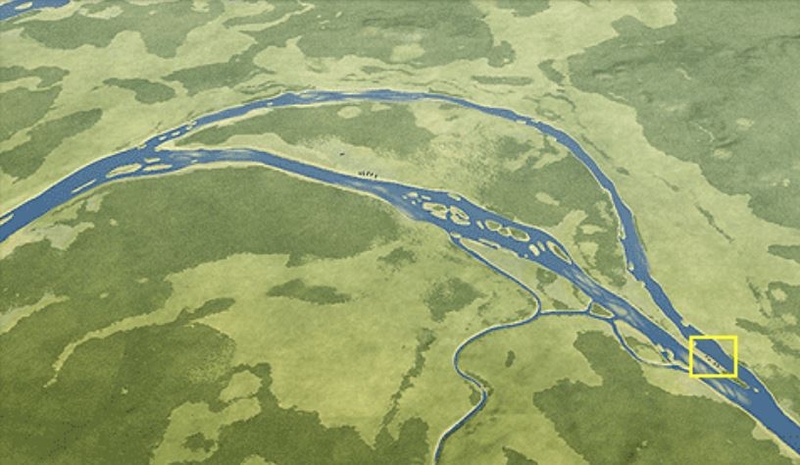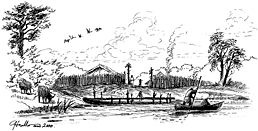- Home
- The city
- The first inhabitants
- The village at Bercy
Location of Bercy village.
3D graphics. © A.-B. Pimpaud
Starting in 1990, construction work at Bercy allowed archaeologists to study with precision the ancient occupations in this area of the city. The prehistoric levels that were found are witnesses to the presence of human occupants, over a very long period, on the banks of an ancient branch of the river.
The Neolithic area
From 4,250 to 2,500 BCE, the site was regularly occupied, although we do not know either the length or the frequency of these occupations. It appears that the houses were regularly flooded and destroyed, and that the communities were obliged to move and rebuild their villages. Although they farmed and raised animals, the first inhabitants of Bercy were also hunters, fishermen and gatherers who took full advantage of the resources offered by their surroundings. In particular, the river allowed them to move easily around the Parisian territory and to establish contact and trade with other communities living on its banks.
Evocation of the village of Bercy in the Middle Neolitihic period. View toward the south.
Drawing © G. Tosello.
© Musée Carnavalet, Paris.
Cast of a yew bow taken from the original, discovered beneath the Bercy warehouses in 1991 and reconstructed by Blaise Fontannaz. It is the oldest bow discovered in Europe.
© CVP / Christian Rapa.
The Bronze and Iron Ages
From 1,200 to the 4th century BCE, human occupation was just as dense as before, although the state of the archaeological deposits is such that our documentation is incomplete and difficult to interpret. Bronze working was added to the activities practiced in the Neolithic era. Among other things, the discovery of a bar of tin and a fibula similar to those produced in northern Italy in the 7th century BCE show that trading activities played a larger and more important role.


